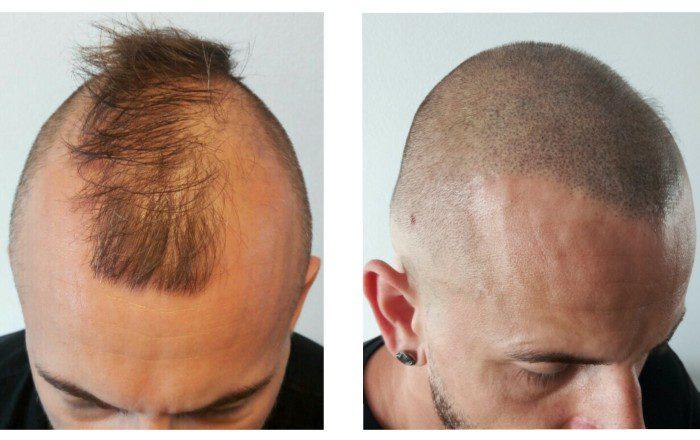
Tricopigmentation on scars, can they be hidden?
Tricopigmentation is a special method of dermopigmentation of the scalp that aims to hide the signs of baldness, scars or any blemishes present in the scalp. This solution is often chosen by those with hairless or thinned areas to mimic hair loss. However, the possibilities of this method are not limited to this, but also allow you to effectively hide the scars on the scalp, regardless of their cause.
Scars on the scalp
Scars on the scalp can have different causes, but generally they can be attributed to two reasons: general trauma or hair transplant... If it is easy to understand how an injury can leave a scar, the link to hair transplantation may not be as obvious, especially for those who do not know how it works.
Il hair transplantation involves removing follicular units from the back of the head and transplanting them to thinned areas of the upper part of the head. Extraction can be done in two ways, depending on the technique used, if FUT or FRU... In the first method, a strip of skin is removed, from which follicular units are then taken. The two remaining open skin flaps are closed with sutures and sutures. On the other hand, with FUE, individual blocks are gripped one by one using a special tubular tool called a punch.
In any case, regardless of the extraction method used, the second stage of transplantation involves the transplantation of units into special incisions made in the recipient's area.
Thus, hair transplantation can leave two different types of scars depending on the method of removal. FUT transplant will only leave one scar, long and linear, more or less thick depending on the case. Many scars will remain after FUE transplantation., as many as there were extracts, but very small and round in shape. FUT scars are usually more visible than FUE scarsbut the latter, on the other hand, makes the donor area appear empty.
Mask scars with tricopigmentation
In case the aforementioned scars cause discomfort to those presenting them, tricopigmentation can be considered as a possible solution to hide them. With this technique it is really possible significantly improve their appearance by significantly reducing their visibility.
Scars are usually lighter than the surrounding area and are devoid of hair. With tricopigmentation, these they are covered with pigment deposits that mimic the effect of growing hair... Thus, not only will the absence of hair no longer be perceived visually, but also on the chromatic level, the light color of the scar will be masked. The end result will be more uniformity between the scar and the surrounding area.
Obviously this it is impossible to completely make the scar disappear... It should also be emphasized that not all scars are treatable. For the treatment to be feasible, safe and effective, the scar must be pearly and flat. Keloid, raised, or diastatic scars do not respond to treatment.
Leave a Reply